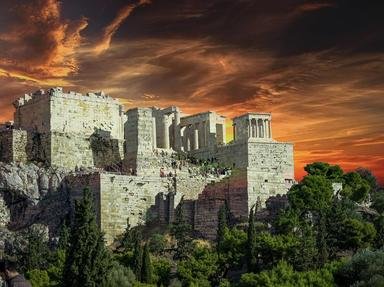Quiz Answer Key and Fun Facts
1. In Greek mythology who is the goddess of the hearth and home?
2. In Greek mythology who became the king of the Titans after overthrowing his father?
3. In Greek mythology who is the ferryman on the River Styx who transports dead souls to the underworld?
4. Who, in Greek mythology, is Zeus' queen and the protector of women and marriage?
5. In Greek mythology who is the messenger of the gods, and also led dead souls to the River Styx?
6. In Greek mythology who were the first gods and goddesses?
7. Who, in Greek mythology is king of the underworld?
8. In Greek mythology who is the wife and sister of Cronos, the mother of Zeus?
9. In Greek mythology who is the goddess of plants and harvests?
10. Who is the king of the ocean in Greek mythology?
11. After this battle a runner was sent to tell Athens of their victory and after he ran the 40 km (25 miles), delivered his message and then dropped dead. Which battle was it?
12. This event is remembered as one of the greatest gestures of self-sacrifice in history when a small group of Spartans stayed to fight and be slaughtered so the rest of the army could flee to safety.
13. This individual introduced democracy in Athens. Who was it?
14. Which individual was the leader of the Spartans at the Battle of Thermopylae?
15. Which individual came up with the idea that the Earth revolved on its axis and that it moved around the sun? He was rejected because he couldn't prove it.
16. What name was given to descendants of the people who had surrendered to Spartan rule?
17. Who was the tyrant who drew up a set of very severe laws in Athens where even minor crimes were punishable by death?
18. Which family line (or dynasty) ruled the section of Alexander's empire that included all of Greece and Macedonia?
19. Which of these was the legendary King of Crete?
20. Who is often called the "Father of History"?
21. Which of these was NOT an ancient wonder of the world?
22. Which of these was NOT an event of the pentathlon?
23. Which simple, undecorated column capital was the most popular on the Greek mainland?
24. Which column capital was decorated with spiral curls?
25. Which ornate, leafy column capital was popular with the Romans?
Source: Author
brittany1119
This quiz was reviewed by FunTrivia editor
bloomsby before going online.
Any errors found in FunTrivia content are routinely corrected through our feedback system.

